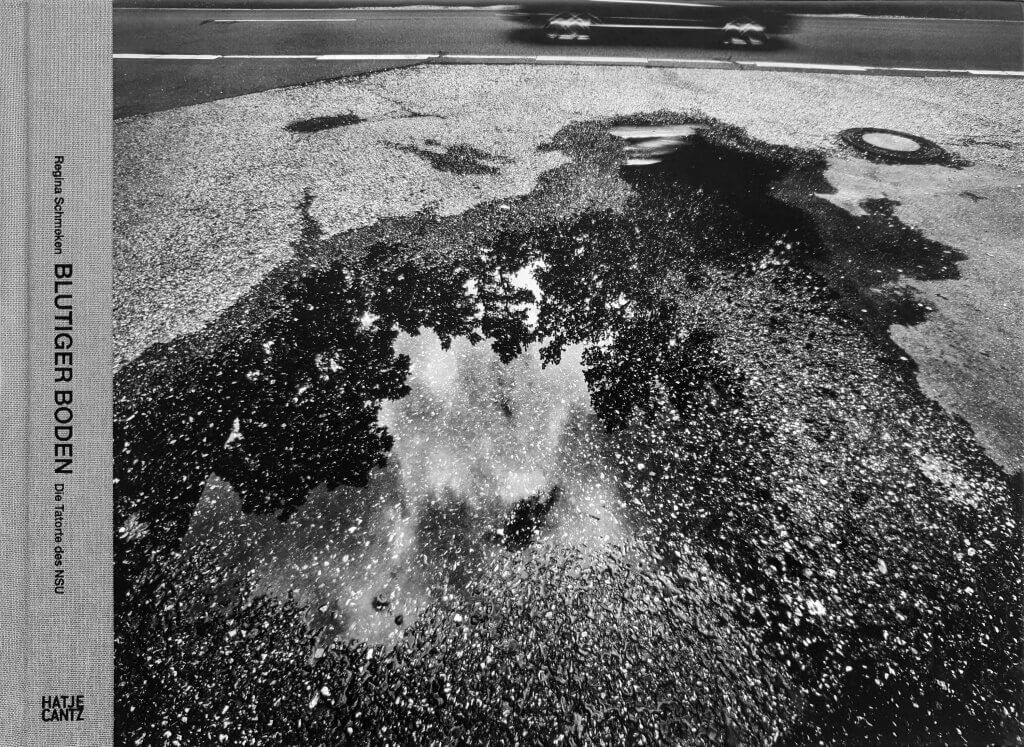BLOODY SOIL. SCENES OF NSU CRIMES
Blutiger Boden. Die Tatorte des NSU

Texts by Hans Magnus Enzensberger, Barbara John, Gorch Pieken, Katja Protte, Annette Ramelsberger, Feridun Zaimoglu, design by Marc Naroska
German, 2016. 144 pages, 80 illustrations in duplex, 30.5 × 22 cm, half linen, ISBN 978-3-7757-4158-3, Hatje Cantz Verlag, price € 15,00
“The most disturbing thing about these photographs is that neither the murderers nor the murder victims can be seen on them. In Schmekens images just the inconspicuous, the banal and the ordinary seem uncanny.” (Hans Magnus Enzensberger)
In spring 2013 Regina Schmeken began to take pictures of scenes of NSU Crimes. Only then she did become aware of the extent of these crimes of right-wing terror in the midst of German cities. In spring 2013 Regina Schmeken began to take pictures of scenes of NSU Crimes. Only then she did become aware of the extent of these crimes of right-wing terror in the midst of German cities. Her exhibition project “Bloody Soil. Scenes of NSU Crimes” in the Military History Museum of the Bundeswehr in Dresden is about the memory of those were murdered and the confrontation with those places that at first glance show no signs of violence. Between 2013 and 2016 she visited the twelve crime scenes in Germany several times. The result is a cycle of large-format black-and-white photographs that have a disturbingly impressive effect and process the events, as it were, with pictorial means.
The propaganda formula “blood and soil” was introduced by Oswald Spengler in “The Fall of the West” and taken up by the Nazis in their conviction that a “healthy state” can only consist of the unity of “people and soil”. The murders of the NSU are based on this idea. Almost all victims were of Turkish origin, they were found lying on the floor in their blood, brutally executed by right-wing terrorists.
Feridun Zaimoglu calls the history of the NSU in the exhibition accompanying catalog “the History of the Great Damage”. Annette Ramelsberger writes, “The Journey to the Crime Scene was a journey into a land of pain and tears, of indifference and clandestine joy over that, what happened. When the NSU got caught after ten murders, two bomb attacks and 15 robberies, all were certain: such a terror series could not be repeated in Germany. Anyone who follows the NSU process knows that there is no guarantee for that.”